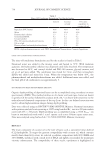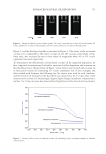642 JOURNAL OF COSMETIC SCIENCE (17) Ro, B. I. and Dawson, T. L. The role of sebaceous gland activity and scalp microfloral metabolism in the etiology of seborrheic dermatitis and dandruff. J. Investig. Dermatol. Symp. Proc., 10, 194–197 (2005). (18) Koch, R. Ueber den augenblicklichen Stand der bakteriologischen Choleradiagnose. Zeitschrift f{ü}r Hyg. und Infekt., 14, 319–338 (1893). (19) Pirofski, L. A. and Casadevall, A. The damage-response framework of microbial pathogenesis and infectious diseases. Adv. Exp. Med. Biol., 635, 135–146 (2008). (20) Vanderwyk, R. and Roia, F. The relationship between dandruff and the microbial flora of the human scalp. J. Soc. Cosmet. Chem., 15, 761–768 (1964). (21) Gosse, R. and Vanderwyk, R. The relationship of a nystatin-resistant strain of Pityrosporum ovale to dandruff. J. Soc. Cosmet. Chem., 20, 603–6 (1969). (22) Vanderwyk, R. and Hechemy, K. A comparison of the bacterial and yeast flora of the human scalp and their effect upon dandruff production. J. Soc. Cosmet. Chem., 639, 629–639 (1967). (23) Chng, K. R. Whole metagenome profiling reveals skin microbiome-dependent susceptibility to atopic dermatitis flare. Nat. Microbiol., 1, 16106 (2016). (24) Poh, S. E. Identification of Malassezia furfur secreted aspartyl protease 1 (MfSAP1) and its role in extracellular matrix degradation. Front. Cell. Infect. Microbiol., 10, 1–10 (2020). (25) Casadevall, A., Pirofski, L. A., Romani, L., Bistoni, F., and Puccetti, P. Microbial virulence results from the interaction between host and microorganism. Trends Microbiol., 11, 157–159 (2003).
Purchased for the exclusive use of nofirst nolast (unknown) From: SCC Media Library & Resource Center (library.scconline.org)






































































































































